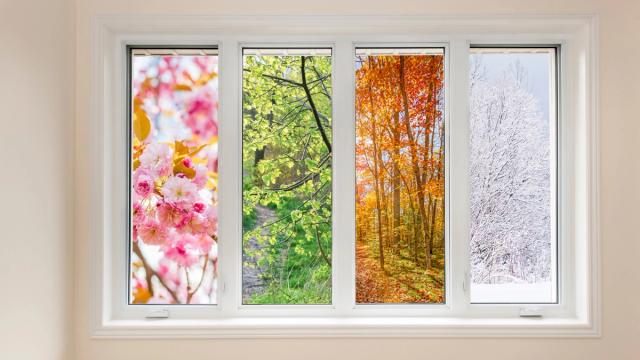How to Handle Customer Objections in the Face of HVAC Price Increases
With high HVAC prices here to stay, addressing customer objections with patience, knowledge, and financing solutions may be the key to closing the sale.

This blog was originally published on August 24, 2022. We updated the content to provide you with the most current information.
We’ve all seen the news dominating headlines lately: inflation rates are returning to normal, and big box stores are lowering prices. Customers will face less sticker shock when shopping for groceries, but the HVAC industry is a different story. We saw prices soar in the past few years and, while it may not be as extreme, HVAC prices are still increasing. As you’re well aware, HVAC price increases change hands from manufacturers to service providers, all the way down to their customers.
Unfortunately, customers might react poorly to a higher-than-expected quote during a time they think prices should be going down. How your team manages customer sticker shock can make all the difference in your customer experience.
Why Managing Customer Sticker Shock Matters
Handling customer objections over HVAC price increases is an important part of building and maintaining customer trust.
For someone with a salaried or non-trade job, a steep quote may initially seem like a rip-off. They don’t have the necessary knowledge to understand how much material cost and labor go into hourly or even flat rate pricing.
While it’s tiring as a contractor to repeatedly explain your pricing, mishandled customer sticker shock can lead to lost business, poor online reviews, and, eventually, a drop in sales.
How To Handle Customer Objections Over HVAC Price Increases
The good news is, you’re already equipped with enough industry knowledge to skillfully manage customer objections. Throw in creativity, flexibility, and some patience, and you might even increase HVAC sales overall.
Let’s dive into some best practices for responding to customer price objections:
1. Approach the Conversation With Empathy – But Don’t Lower Prices
We’re all tired of rising costs. We’re tired of hearing about it on the news, customers are tired of readjusting their budgets, and you’re tired of defending your business’s pricing. However, it’s important to remember that, while you may have had this conversation about HVAC prices countless times, your homeowner may not. Moreover, if this is an emergency repair, the homeowner may be especially unprepared, both mentally and financially. You know your rates are fair, but coming across too defensively could turn customers away.
Of course, being sympathetic to your customers’ feelings does not mean offering a discount. You’ve seen it plenty of times: homeowners may balk and walk away when faced with an unexpected price, but they might also try to negotiate. While accepting a lower price to close a deal is tempting, this can lead to a slippery slope of falling rates. Be patient with shocked homeowners— but make it clear your prices are firm.
2. Educate the Homeowner on Value
When a product or service is fairly priced, most customer sticker shock comes from a misunderstanding of value. Especially thrifty consumers may choose a cheaper product and become disappointed when the quality is lower than its more expensive counterpart. Customer understanding of HVAC prices is no different.
First, many homeowners drastically underestimate the costs of necessary home repairs. It’s not just first-time homeowners, either — 31% of veteran homeowners spent more than expected on home repairs in the past five years. Second, HVAC repairs aren’t as noticeable as, say, a kitchen remodel, so the cost may seem unfair. Educating the homeowner can help them understand the reasoning behind your rates and the value of your work. Making the effort to get on the same page also demonstrates your value as an honest and trustworthy contractor.
3. Provide the Homeowner With Alternative Payment Options
In the end, it isn’t easy to come up with a larger sum of money than you expected. There will be cases when homeowners simply can’t afford your rates upfront. While staying firm on your prices is important for business, so is landing a job. In this case, the best way to avoid losing customers is to offer them alternative ways to pay.
Particularly in the case of millennials, buy now, pay later payment models have exploded in popularity. The option to pay in equal installments over time allows customers the ability to purchase big ticket items they otherwise might not be able to afford. In the case of HVAC expenses, customer financing options could lead to conversion even with the most sticker-shocked homeowner. Working with homeowners to finance their HVAC repairs also improves their customer experience, which may boost business over time.
You can offer financing to customers in many ways, such as offering payment plans yourself. However, that can be risky because you’re not guaranteed payment. Working with a third-party customer financing company, on the other hand, keeps you from carrying the debt and ensures you get paid in full. There can be costs associated with third-party financing, so be sure to check with potential lenders to avoid surprises. At FTL Finance, we always offer programs at no cost to our contractors but also have optional programs with fees.
Interested in closing more sales with customer financing options? Talk with one of our experts today.
 Industry Trends & InsightsHow to Maximize Your Time at HVAC Trade Shows and Beyond
Industry Trends & InsightsHow to Maximize Your Time at HVAC Trade Shows and Beyond Sales StrategyUsing Seasonal Specials to Boost Your HVAC Business Year-Round
Sales StrategyUsing Seasonal Specials to Boost Your HVAC Business Year-Round Sales StrategyThink Like a Customer: The Psychology Behind Closing More HVAC Deals
Sales StrategyThink Like a Customer: The Psychology Behind Closing More HVAC Deals